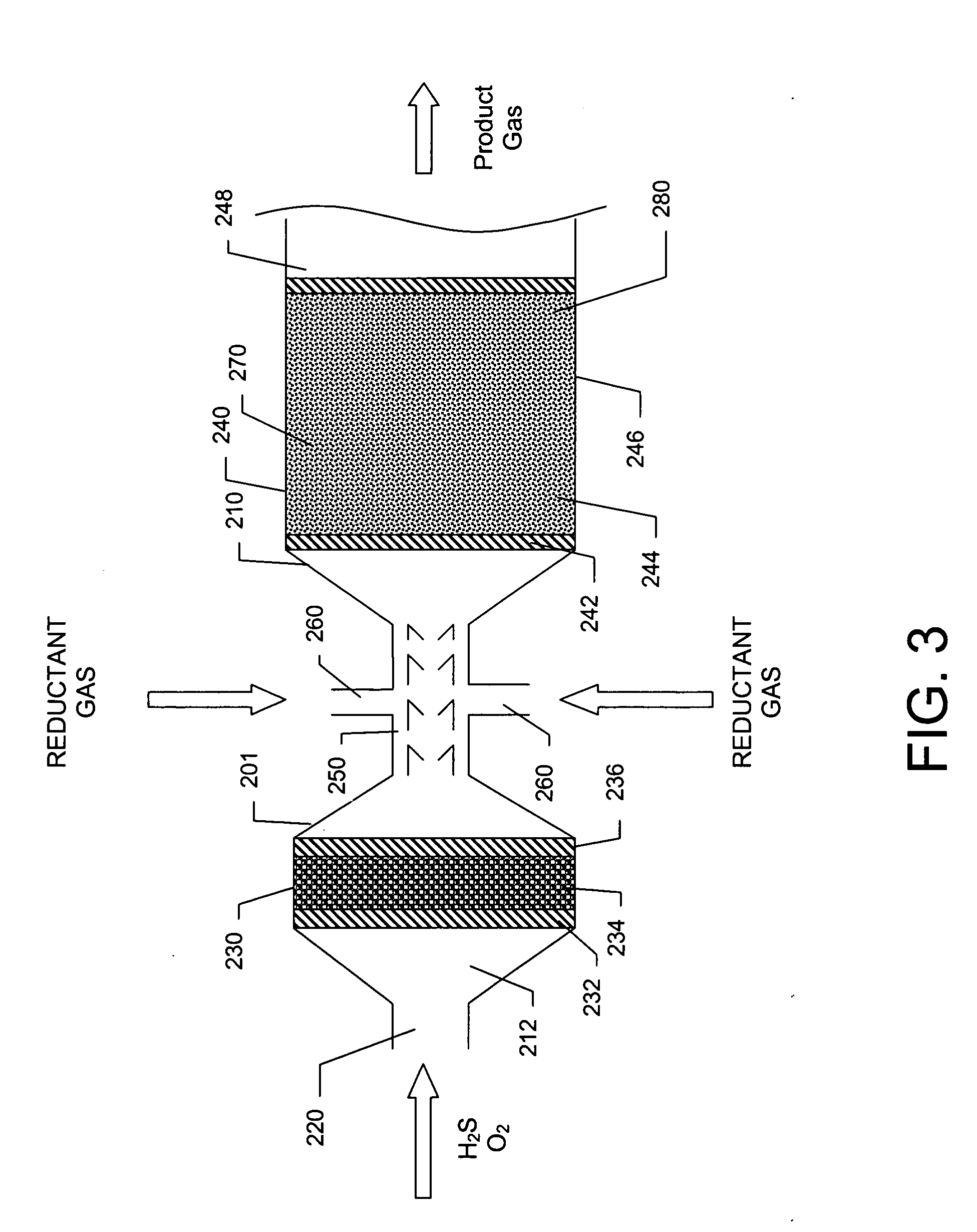Two-stage catalytic process for recovering sulfur from an H2S-containing gas stream
a catalytic process and gas stream technology, applied in the field of sulfur recovery processes, can solve the problems of over-utilization, low sulfur recovery, and over-exceeding the market value of gas, and achieve the effects of optimizing the conversion of h2s, reducing the so2 level in the product gas, and improving operability and stability
- Summary
- Abstract
- Description
- Claims
- Application Information
AI Technical Summary
Benefits of technology
Problems solved by technology
Method used
Image
Examples
Embodiment Construction
[0044] A basic SPOC-II™ sulfur recovery system 1, shown in FIG. 1, includes reactor 10 and a cooling zone 110, which contains a heat exchanger 90 and a sulfur condenser 100. Depending on the purity of the H2S stream, the particular contaminating gases included in the feedstock, and the purity requirements for the emerging gas stream, the system may also include a heater 120 and one or more tail gas clean up unit 130. The reactor is preferably similar to the short contact time (i.e., 200 milliseconds or less) / fast quench (i.e., less than one second) reactors that are used for carrying out the catalytic partial oxidation of light hydrocarbons and hydrogen sulfide as described in U.S. Pat. No. 6,403,051 or U.S. Pat. No. 6,579,510, except in the present case reactor 10 is modified to include two different reaction zones in serial arrangement. The first reaction zone is suitable for carrying out the catalytic partial oxidization of H2S to gaseous elemental sulfur and water. The second re...
PUM
| Property | Measurement | Unit |
|---|---|---|
| temperatures | aaaaa | aaaaa |
| temperature | aaaaa | aaaaa |
| temperature | aaaaa | aaaaa |
Abstract
Description
Claims
Application Information
 Login to View More
Login to View More - R&D
- Intellectual Property
- Life Sciences
- Materials
- Tech Scout
- Unparalleled Data Quality
- Higher Quality Content
- 60% Fewer Hallucinations
Browse by: Latest US Patents, China's latest patents, Technical Efficacy Thesaurus, Application Domain, Technology Topic, Popular Technical Reports.
© 2025 PatSnap. All rights reserved.Legal|Privacy policy|Modern Slavery Act Transparency Statement|Sitemap|About US| Contact US: help@patsnap.com



